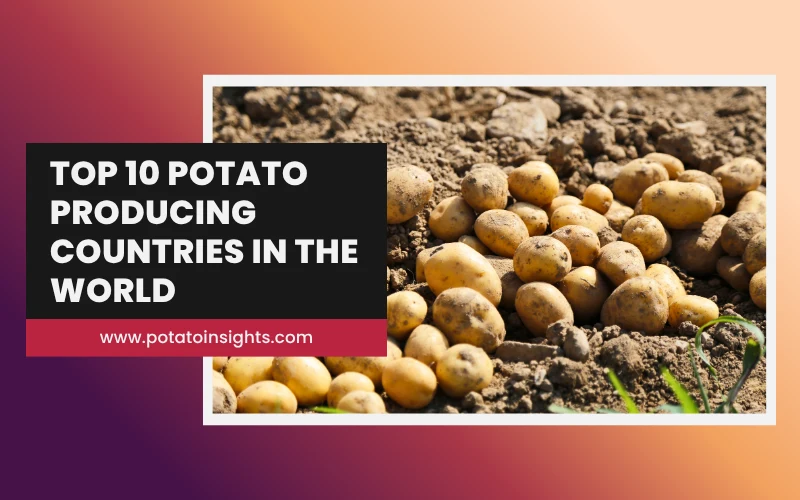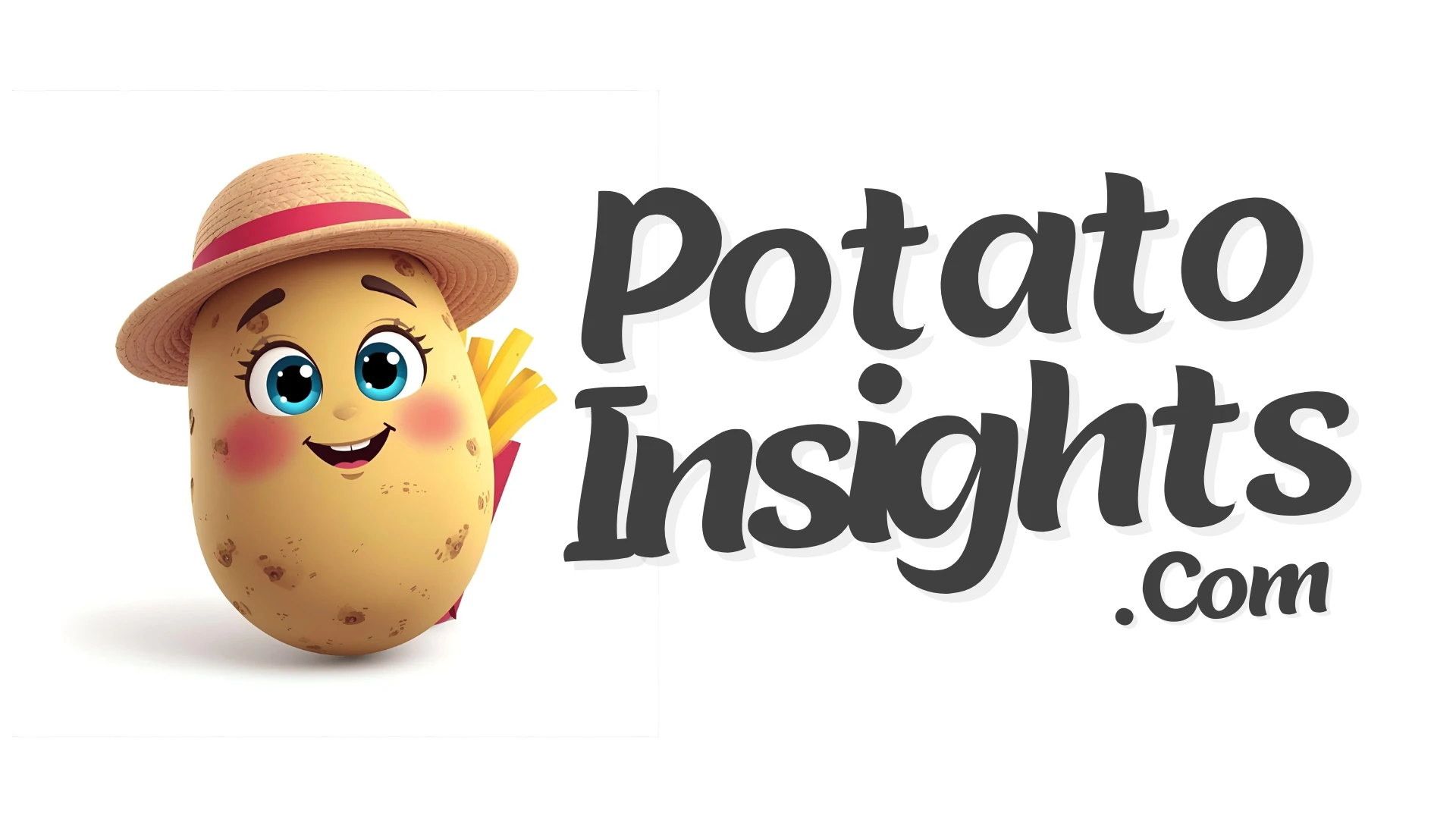
Potatoes are one of the most eaten foods on Earth. They are used in countless dishes, from fries and chips to soups and curries. Because they grow in many climates and are rich in nutrients, they play big role in feeding people around the world.
In 2025, a few countries stand out for producing the most potatoes. Some focus on large scale farming, while others rely on traditional methods. Knowing which countries grow the most potatoes helps farmers, traders and even consumers understand global food supply trends.
This article looks closely at the top 10 potato producing countries in the world, using recent data and clear analysis. It also explains what affects production levels and what lessons can be learned from these farming patterns.
How Potato Production Is Measured
When experts rank the top producers, they usually look at three things:
- Total production (in million metric tons)
- Harvested area (how much land is used)
- Yield (how many tons are grown per hectare)
A country can produce a lot of potatoes because it has a huge land area, high yields or both. Countries like China and India have both factors in their favor.
Global Potato Production Overview
According to FAO and several agricultural reports, global potato production in 2023 reached about 383 million metric tons and by 2025 it is expected to stay near that level. The harvested area in 2023 was 16.8 million hectares, drop from previous years.
Even though total land used for potatoes has slightly dropped in recent years, the world still produces more potatoes than before. This is mainly because farmers are improving their farming methods and seed quality.
Also read: Top 10 Potato Producing States in India 2025
Here is a simple table showing the main producers based on 2023-2024 data (values are approximate):
| Rank | Country | Production (Million Metric Tons) |
| 1 | China | 93.5 |
| 2 | India | 60.1 |
| 3 | Ukraine | 21.4 |
| 4 | Russia | 19.3 |
| 5 | United States | 19.0 |
| 6 | Germany | 10.5 |
| 7 | Bangladesh | 9.9 |
| 8 | France | 8.8 |
| 9 | Poland | 8.2 |
| 10 | Netherlands | 7.9 |
These ten countries together account for more than two-thirds of global potato output.
1. China – The World Leader
China holds the top spot by wide margin. With over 93 million tons of potatoes each year, it alone produces nearly one-fourth of all potatoes grown worldwide.
Potatoes are a key crop in China’s food system. They are grown across northern, central and western regions, often in different seasons. The Chinese government has also encouraged potato farming because it helps support food security and rural income.
Better seed varieties and irrigation have helped improve yields. Even though China’s population is massive, domestic production still meets most of its demand.
2. India – Rapid Growth and High Demand
India ranks second, producing around 60 million tons yearly. Potatoes are grown mainly in states like Uttar Pradesh, West Bengal and Bihar.
What makes India unique is its combination of small and large farms. Many farmers grow potatoes as short duration crop between main planting seasons. Indian consumers use potatoes in everyday cooking, so demand stays high.
Recent years have seen higher output thanks to better cold storage networks and wider use of improved seeds. India also exports some potatoes and processed products to nearby countries.
3. Ukraine – Strong European Producer
Ukraine remains one of Europe’s largest potato producers, with about 21 million tons in 2023. The country’s black soil, known as chernozem, is rich in nutrients and perfect for root crops.
Even with current challenges such as weather changes and trade limits, potato farming continues to be important for Ukraine’s domestic food supply. Most of its potatoes are used locally rather than exported.
Farms range from small family plots to larger commercial operations, showing mix of modern and traditional methods.
4. Russia – Large Land, Variable Yields
Russia produces close to 19 million tons of potatoes every year. The crop grows across many regions, from the central plains to Siberia.
Production levels in Russia change year to year because of climate and soil conditions. Some parts face short growing seasons or heavy rainfall, which can reduce yields. Despite this, potatoes remain a common food in Russia and a stable part of its agriculture sector.
Government programs in recent years have aimed to improve productivity through better seed supply and local processing units.
Also read: Latest Potato Industry News and Updates
6. United States – Modern and Efficient
The United States is another top producer, with around 19 million tons annually. Unlike some other countries, the U.S. has highly mechanized potato farming.
States such as Idaho, Washington, Wisconsin and North Dakota lead production. Potatoes in the U.S. are mainly used for processing, into fries, chips and frozen products, rather than only for home cooking.
The country’s yields per hectare are among the best in the world because of advanced technology, research support and efficient irrigation systems.
Other Top Potato Producing Countries
Several European and Asian nations follow the top five:
- Germany grows over 10 million tons, using precise farming, strong export networks.
- Bangladesh has increased output to around 9.9 million tons, showing how smaller countries can make strong gains.
- France and Poland each produce about 8–9 million tons, supported by efficient storage and processing plants.
- Netherlands, though small in size, produces almost 8 million tons thanks to high yields and export oriented systems.
Together, these countries strengthen the global potato market by supplying both raw and processed forms.
Why These Countries Lead in Potato Farming
Several reasons explain why these nations dominate production:
- Climate and soil: Potatoes need moderate temperatures and well drained soil. Many of these countries have regions that fit that need.
- Farming practices: Mechanization, irrigation and research have raised yields.
- Government support: Subsidies, training and crop programs keep potato farming profitable.
- Market demand: Strong local consumption and export potential push production higher.
- Storage and processing: Facilities that reduce waste and increase shelf life help stabilize supply.
When these factors come together, they make a country a reliable potato supplier year after year.
Importance of Potato Production for Food Security
Potatoes are not only popular; they are also vital for nutrition and food safety. They provide energy, vitamins and minerals at low cost. In many regions, they help balance diets and reduce hunger during poor grain seasons.
Large producers like China and India rely on potatoes to feed million affordably. For Europe and North America, potatoes are both a food and an export product.
Even countries with smaller outputs can gain by improving yield and reducing waste. Efficient potato farming can also support industries such as snacks, frozen food and starch production.
For policymakers and farmers, focusing on sustainable potato farming means improving irrigation, seed quality and storage to maintain steady supply while protecting soil health.
Key Lessons for Farmers and Traders
From looking at the top potato producing countries, we can draw some practical lessons:
- Use better seeds: Improved varieties give higher yields and resist disease.
- Invest in storage: Reducing post harvest loss increases income.
- Plan around demand: Track local and export needs to choose the right time to harvest or sell.
- Watch weather patterns: Climate changes affect both yield and quality.
- Collaborate: Farmers’ groups can share knowledge and get better access to tools or loans.
Even small improvements in these areas can make a big difference in production and profit.
Economic and Trade Impact
Potatoes play strong role in world trade. Some countries, like the Netherlands and France, focus on exports of seed potatoes and processed goods. Others, such as Bangladesh and India, meet mostly local demand.
Changes in major producers can affect global prices. For example, if China or India faces a poor harvest, global supply can tighten, leading to higher costs. Importing countries often keep track of these patterns to manage supply chains.
Because potatoes are part of both local diets and global trade, stable production helps maintain balance in food markets.
Also read: Global Potato Crisp Market to Reach USD 45 Billion by 2035
Future Outlook (2025–2030)
Analysts expect global potato output to stay steady or slightly grow in the next five years. Population growth in Asia and Africa will increase demand and more land may be used for potatoes in new areas.
At the same time, weather changes and water scarcity could affect certain regions. The focus will likely shift toward improving yields rather than expanding land.
Countries that adopt better farming technology, invest in storage and train farmers will maintain strong positions in global market.
Summary of Top Potato Producing Countries
Here’s a short recap of where things stand:
- China: 93.5 million tons
- India: 60.1 million tons
- Ukraine: 21.4 million tons
- Russia: 19.3 million tons
- United States: 19.0 million tons
- Germany, Bangladesh, France, Poland, Netherlands: 8-10 million tons range
These numbers may shift slightly each year, but the order stays about the same. Together they make up the majority of world potato output.
Conclusion
The top potato producing countries show how important this single crop is for the global food chain. China and India lead because of their land and population size, while others like the U.S. and the Netherlands stand out for efficiency and technology.
Potatoes remain one of the most dependable foods worldwide cheap to grow, easy to store and vital to millions of diets. Understanding where they come from helps governments, farmers and businesses plan better for the future.
Stable production and smart farming can keep potatoes affordable and available to everyone.
Frequently Asked Questions (FAQ):
-
Which country grows the most potatoes in the world?
China is top producer, with about 93 million metric tons per year.
-
Why is India second on the list?
India has vast farmland, strong local demand and better cold storage, helping it produce around 60 million tons yearly.
-
What are the average global yields?
On average, farmers grow between 18 and 22 tons per hectare, but yields differ by region and climate.
-
Which countries export the most potatoes?
The Netherlands, France and Germany lead in exports, mainly of seed potatoes and frozen products.
-
How will climate change affect potato production?
Rising temperatures and irregular rainfall can lower yields, but new seed varieties and better water management can help maintain supply.
Research Sources:
- Food and Agriculture Organization (FAO) – FAOSTAT Global Production Data (2023–2024)
- FreshPlaza – FAOSTAT 2024: Global Potato Production Rises Despite Shrinking Harvested Area
- Wikipedia – List of Countries by Potato Production
- Jagran Josh – Largest Potato Producing Countries in the World (2024 Update)
- ResearchGate – A Comprehensive Analysis of Potato Production and Trade: Global Trends and US Forecasting (2024)
- PMC (US National Library of Medicine) – Potato Industry Insights and Global Supply Chain Study (2024)
- World’s Top Exports – Potato Exports by Country (2024 Report)
Follow us to receive updates🔔



